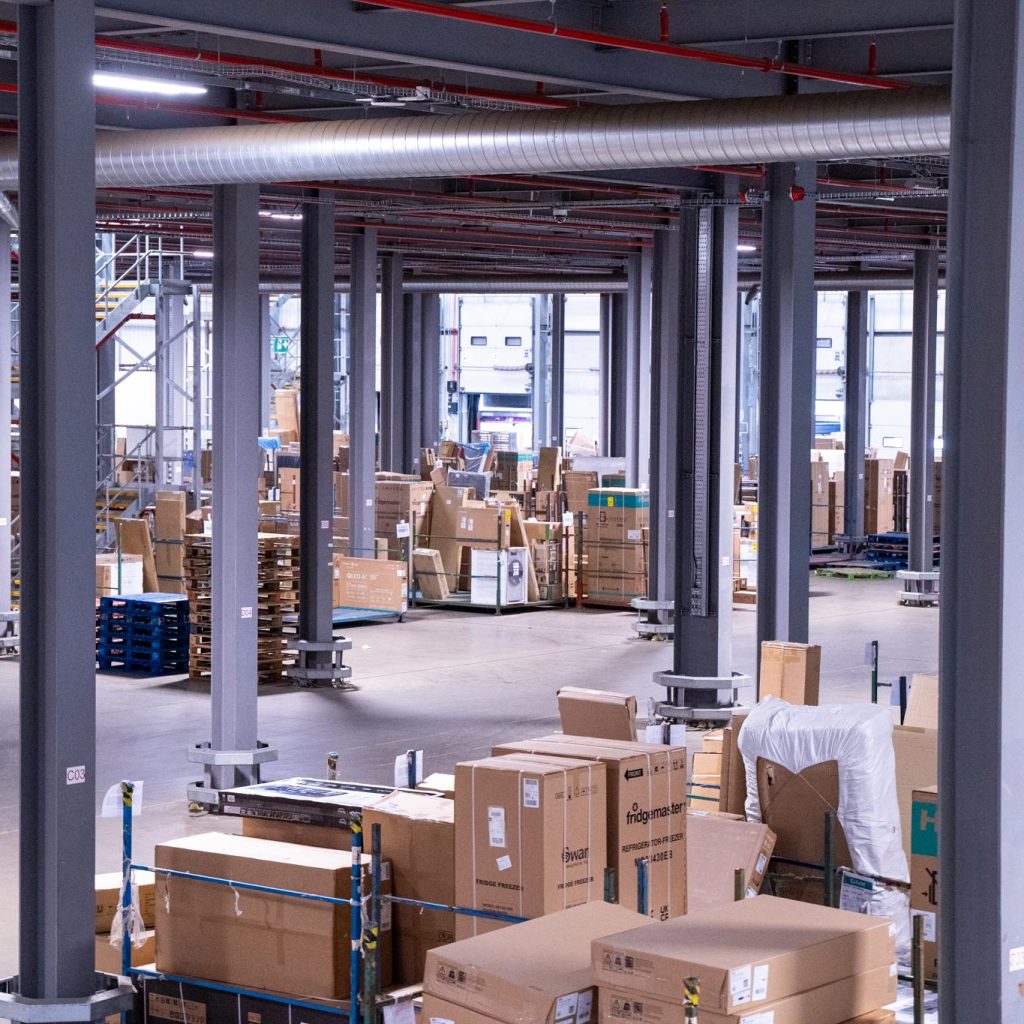Dispatcher WMS and User Services Portal Case Study
Dispatcher WMS and User Services Portal Case Study
How Socius24 helped a Leading Home Delivery company optimise integration with their Service Partners

About the customer
As the UK’s leading specialists in two-person home delivery, they handle items that are too large, heavy, fragile, or valuable to be safely or effectively delivered by a single courier. Offering flexible delivery options, including 24 & 48-hour delivery and online diary booking they allow customers to choose a time that best suits them.
The Project


This customer had used Dispatcher WMS for many years, but as their supply chain evolved to include more third-party carriers and sub-contracting service partners, they realised they needed additional functionality that was outside the scope of a WMS. These challenges included:
Key Challenges
Limited real-time visibility and manageability of orders post-shipping
Before the new solution was implemented, products were only ever scanned post-shipment if it arrived back at the hub after a failed delivery. If a product was not scanned again after shipping, then it was assumed to have been delivered. Neither of these options offered the visibility or great customer service option they desired.
Dependence on manual communication
Because information could not be transferred from one system to another, communication had to be manual, which slowed things down and took up valuable operator time. Additionally, manual handling was considered to be a weak link that could potentially introduce errors into the operation.
“The new system wasn’t about offering an extension of our RDTs – although now we do have people out on the road who can use warehouse functionality. It was more about bringing in self-service functionality for our Service Partners.
“Post-implementation, our carriers don’t need to pick up the phone and speak to the hub if they have a question. It’s reduced queries and the time taken to answer them.”
Inability to make dynamic, last-minute adjustments to delivery routes
Service partners often have more than one route, but before the new solution, it wasn’t possible to dynamically move orders from a less efficient route to a more efficient one once they’d been shipped.
Manual instructions for third-party partners
This customer works with third party service partners who process and ship orders out on their behalf. Before Socius24 created a mobile app that they now use to facilitate this, they would manually instruct partners about the activities they needed to perform, and then manually update the system.
Solutions Delivered
The customers partnered with Socius24 to develop a solution that was tailored to their exact needs
The new system has reduced the amount of lead-time needed to get product onto the most efficient route, and now we can dynamically swap routes if one becomes more geographically efficient than another after orders have shipped. We’ve effectively been able to merge 24-hour and 48-hour orders and created more efficient routes.
The customer needed end-to-end traceability, real-time updates, and a smoother integration with their service partners to meet their own high operational standards and optimise delivery planning. So, Socius24 developed and implemented the new system via their User Services Portal (USP), which is fully integrated with the Blue Yonder Dispatcher WMS. This provided:
End-to-End Traceability: Real-time post-shipping updates mean that every order can now be tracked from warehouse to doorstep. This has expanded visibility and increased control for the planners.
Enhanced Planner Functionality: By giving planners the ability to merge delivery types and move orders from one to another, the new functionality has expanded operational efficiency and delivery flexibility.
Streamlined Service Partner Integration: The new system has given service partners tools to self-serve and manage orders autonomously. Consequently, the need for manual intervention has reduced, letting the customer focus resources on what really matters, rather than on things that can wait.

For more information about the new solutions developed,
and to read the rest of this in-depth case study, request it now
“We’ve been able to improve our planning decisions without the need to invest in a separate planning solution. We can now merge things later in the planning process, increasing route planning efficiency.”
The Last Word
There have been no gaps in the software – and at no time have we had to revisit it. I wish we’d started working with Socius24 much earlier. Their performance has been great throughout the original project, and the additional changes to USP that we’ve implemented since.
The solution they have created for us has surpassed expectations and our overall experience of Socius24 is superb – ten out of ten.
Request the Full Case Study Now
If you’ve enjoyed this Case Study, subscribe to our weekly Newsletter
– The World of WMS –
for more of the same great information!
SOCIUS24
Subscribe to our Newsletter.
© 2023 Socius24 Limited | Company Registered in England and Wales 08389688 | Privacy Policy